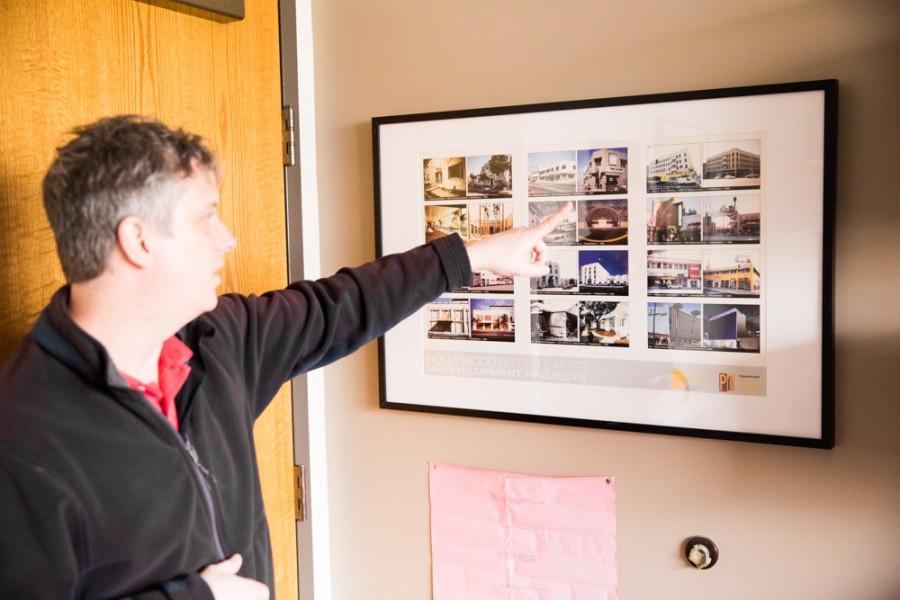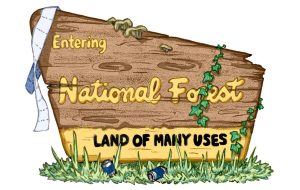Outside of the Classroom
Photo by Tywen Kelly
February 4, 2016
What do professors do when they’re not teaching our classes and grading our papers? Whitman faculty from across the disciplines engage in interesting and powerful research outside of the classroom confines. We talked to a few professors about their current projects, and how their work has evolved over time.
Matt Reynolds – Associate Professor of Art History & Visual Culture Studies
What kind of research have you done or are you currently working on?

What I worked on in the past was urban redevelopment in Hollywood and the ways in which film history informed the revitalization of Hollywood, California…I’m really interested [how] public art and media are used to mobilize urban redevelopment but also the ways in which they’re used for gentrification.
Now what am I working on is the Maya Linn “Confluence” project. [The artworks are] installed in six separate locations along the Columbia river and they were commissioned by arts organizations in the Northwest and by the local tribes. They are meant to commemorate the bicentenial of the Lewis and Clark exhibition but not to monumentalize or memorialize it…I’m writing about those different sites in the era of the Anthropocene, what does it mean to make art about a kind of dramatic change to a space in a moment where we have to address all these issues about climate change?
Is there a connection between these two projects?
One of the things that I’m interested in is the ways in which these sites become tourist locations, they attract tourist and people who might not otherwise go to these spaces…and then what are the ramifications of that tourist economy?
Do you foresee publishing a book on this topic?
Certainly this issue of making art in the era of the Anthropocene is a huge issue…Because I’m in such an early stage of this new research I’m not sure what I’m going to find; I’m not sure if the topic merits a book length study. I’m going to see what I discover as these are issues I’m really interested in.
Alissa Cordner – Assistant Professor Sociology
I heard you just returned from a semester-long sabbatical, what were you researching?
I finished the writing and production piece of a book that I have coming out in April that’s on industrial chemicals and chemical regulation…The sabbatical research that I did was looking at risk management and wildfires.

I lived down in central Oregon and became embedded with the firefighters and fire managers working for the Deschutes National Forest and spent the summer and fall shadowing firefighters and fire mangers. I went through the week long training that wildland fire fighters and fire managers do to figure out how to keep myself safe, to look at how they communicate and also looked at everything from the organization of the incident command team structure to how to dig a fire line.
I hung out with firefighters and fuel technician operators to figure out how risk management operates down the chain of command, from the folks who are developing policy to the firefighters on the line looking at fires and inequalities in the Pacific Northwest… in Eastern Oregon there are a lot of folks who are dependent on natural resources and these aren’t necessarily folks who have a lot of money.
So you looked at the process of being a firefighter and the effects of fire on wildlife and people?
Not on wildlife specifically but on the people that live in those spaces. They call those spaces the wildland urban interface, the areas where people live that might be impacted by wildfire which includes a place like Walla Walla because we had the Blue Creek fire here this summer that threatened the water shed. So parts of Walla Walla up Mill Creek would definitely be considered part of the wildland urban interface.
Do you collaborate with students on your work?
I do. With a new project I am having a research assistant help me look at how farmers in the Walla Walla region think about agricultural risk. I’ve done interviews with a former student looking at how farmers who grow wheat crops and also how wine growers think about agricultural risk.
We thought we would see a profound difference between the two but actually there was a little bit of fuzziness about if there is a line between a wheat farmer and a vineyard manager because a lot of the folks who have been long term families living the area that now grow grapes also grow [other crops].
Alvaro Santana-Acuna – Assistant Professor of Sociology
What are you currently researching?
The question I am trying to ask is how is it that One Hundred Years of Solitude by Gabriel Garcia Marquez became a global classic?…Since I cannot interview everybody [who has read this book] what I have done is look at different literary scholars, researchers, ordinary people on Amazon, readers on different blogs and their opinions about the book, and looking at [reactions from] 56 countries and over 50 years I have collected a data set that looks at the global diffusion of this book and its perception.
What I came up with was this idea that there are certain elements in the book that have become meaningful or memorable. I have referred to them as indexes or indexicals. These are things, like sentences, events, characters, that readers in different social and cultural contexts continue to remember from the book. If you actually ask me how things become classics, it is thanks to this social phenomenon of indexation.

So every classic book contains these indexes and One Hundred Years of Solitude is just one example?
Yes. What I’m trying to advance is a theory that could apply to other books. At the same time I’m not only looking at this book but books that were published at the same time or a few years before or a few years after, books that are somehow similar…Sociologist highlight organizational factors such as García Márquez’s literary agency or the press that published the novel, whereas people in literary studies tend to emphasize the quality of the text, the quality of the language.
I’m trying to produce a narrative that would integrate these options. One Hundred Years of Solitude is a highly innovative text. But there were others even more highly creative and innovative. But they didn’t become classics.
Then as a sociologist are you looking at the reader’s reaction?
Yes that is important too but that is very difficult to interview so I look at sites such as Barnes and Noble or Amazon because you have comments from readers that talk about the books. For me, readers’ criticism is as important as praise. Criticism allows the book to have visibility over time because it means that people care about it in a negative fashion.
These people even felt compelled that they had to express their criticism publically which is something that attracts new generations of readers to read it, which is at the end what I’m interested in.
How is that these things, like a book, then become a social institution, which is something that sociologist are interest in. How is it that something in a text becomes a social institution, something that you print on t-shirts something that your entire existence of a career as an academic can depend [upon].
This diffusion of indexes transforms over time the text into social institution. So the classic can constrain people’s lives or help them to see things in new ways. The connection between the text and readers’ everyday life makes the book part of their daily experiences.
Heidi Dobson – Professor Biology
What kind do research are you involved in right now?
Right now I am still continuing my long term interest in trying to understand why some solitary bees…are attracted to certain plants, how they first come to the nest they find and recognize the plant. I’m interested in the role of visual cues, color shape, and the role of odors coming from the plants. Some of those studies are not quite as prominent because I’m coming to the end of them and I only do those in Sweden. [Next] I’ve been starting new projects here where I’m documenting the feeding of pollen by adult bees…[One of the] implications is for pesticides. A lot of these insecticides like these new neonicotinoids, which are so big on the news, a lot of GMOs are trying to get it out of the marketplace. These are insecticides that when applied to the plant they move into all parts of the plant like the nectar and pollen, and some people think this is one of the factors contributing to the colony collapse disorder in honey bees. But we’re finding a lot of solitary bees are decreasing in populations and while some of that is due to habitat and our human activity, we think a lot has to do with the insecticides as well.

How long have you been having students help you with their research?
Ever since I got here. I got here in ’92 and ‘94 was the first year I took students. I’ve taken over 60 students to Sweden, and while I’m here in Walla Walla I involve students in my research here.
What is that relationship like working with students?
Oh I love it. It’s one of the highlights of my job. It’s a wonderful experience I love working that close 1-1 and introducing my students to the excitement. I love this field because obviously I have a passion for flowers and bees, I never tire working with them, so sharing with students the questions and how to think about it and teaching them to appreciate working in the field …I just love working with them so they gain more confidence in themselves and take more ownership with the project.






